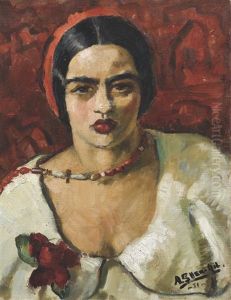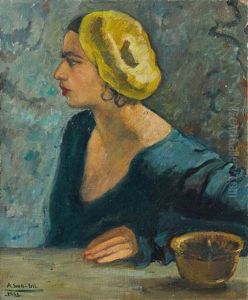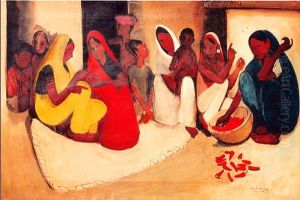Amrita Sher-Gil Paintings
Amrita Sher-Gil, born on January 30, 1913, in Budapest, Hungary, was a pioneering artist often referred to as one of the greatest avant-garde women artists of the early 20th century. She was the daughter of Umrao Singh Sher-Gil Majithia, a Sikh aristocrat and a scholar, and Marie Antoinette Gottesmann, a Hungarian-Jewish opera singer. Sher-Gil's legacy is a blend of Eastern and Western ideologies and art forms, making her work unique in the realms of modern Indian art. She is considered an important figure in Indian art history, whose legacy and influence are still celebrated today. Sher-Gil's work is often compared to that of the Mexican artist Frida Kahlo, as both artists explored themes of femininity, identity, and pain, although they worked in different parts of the world and were unaware of each other's art.
Sher-Gil's family moved back to India in 1921, where she began her formal art training at a young age. In 1929, she moved to Paris to study at the École des Beaux-Arts, where she was greatly influenced by European painters, particularly those from the Post-Impressionist period. During her time in Paris, Sher-Gil developed her own style, characterized by bold colors and an emphasis on capturing the emotional and spiritual life of her subjects. Sher-Gil returned to India in 1934, where she embarked on a new phase of her career. She traveled extensively through India, drawing inspiration from the classical and folk traditions of Indian art. Her paintings from this period are celebrated for their portrayal of the daily lives and struggles of Indian people, with a particular focus on the lives of women.
Sher-Gil's work is a critical bridge between the traditional and the modern, effectively merging the visual narratives of the East and the West. Despite her relatively short life—she died at the young age of 28 on December 5, 1941, in Lahore, British India (now in Pakistan)—Sher-Gil produced a body of work that has had a lasting impact on the art world. Her paintings are characterized by their intense, rich colors, and their profound empathy for the human condition. Sher-Gil's oeuvre continues to be celebrated for its depth, with her life and work being the subject of numerous books, documentaries, and exhibitions around the world. In India, she is recognized as one of the pioneering figures in modern Indian art, with her work being a significant part of the National Gallery of Modern Art's collection in New Delhi. Sher-Gil's legacy endures through her influence on generations of artists, both in India and internationally.










